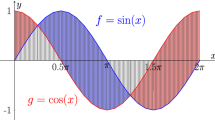Abstract
A distance on the problem domain allows one to tackle some typical goals of machine learning, e.g. classification or conceptual clustering, via robust data analysis algorithms (e.g. k-nearest neighbors or k-means).
A method for building a distance on first-order logic domains is presented in this paper. The distance is constructed from examples expressed as definite or constrained clauses, via a two-step process: a set of d hypotheses is first learnt from the training examples. These hypotheses serve as new descriptors of the problem domain Λh: they induce a map** π from ,Ch onto the space of integers INd. The distance between any two examples E and F is finally defined as the Euclidean distance between π(E) and π(F). The granularity of this hypothesis-driven distance (HDD) is controlled via the user-supplied parameter d.
The relevance of a HDD is evaluated from the predictive accuracy of the k-NN classifier based on this distance. Preliminary experiments demonstrate the potentialities of distance induction, in terms of predictive accuracy, computational cost, and tolerance to noise.
Preview
Unable to display preview. Download preview PDF.
Similar content being viewed by others
References
A. Aamodt and E.Plaza. Case-based reasoning: Foundational issues, methodological variations, and system approaches. AICOM, 7(1), 1994.
G. Bisson. Learning in FOL with a similarity measure. In Proceedings of 10 th AAAI, 1992.
A. Cornuejols. Analogy as minimization of description length. In G. Nakhaeizadeh and C. Taylor, eds, Machine Learning and Statistics: The interface. Wiley, 1996.
C. DeCaestecker. Incremental concept formation with attribute selection. In K. Morik, editor, Proc. of EWSL 1989, pages 49–58. Pitman, London, 1989.
P. Domingos. Rule induction and instance-based learning: A unified approach. In Proceedings of IJCAI-95, pages 1226–1232. 1995.
R.O. Duda and P.E. Hart. Pattern Classification and scene analysis. John Wiley and sons, Menlo Park, CA, 1973.
W. Emde and D. Wettscherek. Relational instance based learning. In L. Saitta, editor, Proceedings of ICML-96, pages 122–130, 1996.
U.M. Fayyad, G. Piatetsky-Shapiro, and P. Smyth. From data mining to knowledge discovery: An overview. In Advances in Knowledge Discovery and Data Mining, pages 1–34. MIT Press, 1996.
D. Fisher. Iterative optimization and simplification of hierarchical clusterings. Technical report, Vanderbilt University, TR CS-95-O1, 1995.
D. Gentner. Structure map**: A theoretical framework for analogy. Cognitive Science, 7:155–170, 1983.
D. Heath, S. Kasif, and S. Salzberg. Induction of oblique decision trees. In Proceedings of IJCAI-93, pages 1002–1007. Morgan Kaufmann, 1993.
J. D. Kelly and L. Davis. A hybrid genetic algorithm for classification. In Proceedings of IJCAI-91, pages 645–650. Morgan Kaufmann, 1991.
R.D. King, A. Srinivasan, and M.J.E. Sternberg. Relating chemical activity to structure: an examination of ILP successes. New Gen. Comput., 13, 1995.
S. Muggleton. Inverse entailment and PROGOL. New Gen. Comput., 13:245–286, 1995.
S. Muggleton and L. De Raedt. Inductive logic programming: Theory and methods. Journal of Logic Programming, 19:629–679, 1994.
J.R. Quinlan. Learning logical definition from relations. Machine Learning, 5:239–266, 1990.
M. Sebag. Delaying the choice of bias: A disjunctive version space approach. In L. Saitta, editor, Proceedings of ICML-96, pages 444–452. 1996.
M. Sebag and C. Rouveirol. Tractable induction and classification in FOL. In Proceedings of IJCAI-97, to appear.
M. Sebag and M. Schoenauer. A rule-based similarity measure. In S. Wess, K.-D. Althoff, and M. M. Richter, eds, Topics in Case-Based Reasonning, volume 837 of LNCS, pages 119–130. Springer Verlag, 1994.
A. Srinivasan and S. Muggleton. Comparing the use of background knowledge by two ILP systems. In L. de Raedt, editor, Proceedings of ILP-95. Katholieke Universiteit Leuven, 1995.
ESPRIT Project LTR 20237ILP2. PPR-1, 1997.
Author information
Authors and Affiliations
Editor information
Rights and permissions
Copyright information
© 1997 Springer-Verlag Berlin Heidelberg
About this paper
Cite this paper
Sebag, M. (1997). Distance induction in first order logic. In: Lavrač, N., Džeroski, S. (eds) Inductive Logic Programming. ILP 1997. Lecture Notes in Computer Science, vol 1297. Springer, Berlin, Heidelberg. https://doi.org/10.1007/3540635149_55
Download citation
DOI: https://doi.org/10.1007/3540635149_55
Published:
Publisher Name: Springer, Berlin, Heidelberg
Print ISBN: 978-3-540-63514-7
Online ISBN: 978-3-540-69587-5
eBook Packages: Springer Book Archive




